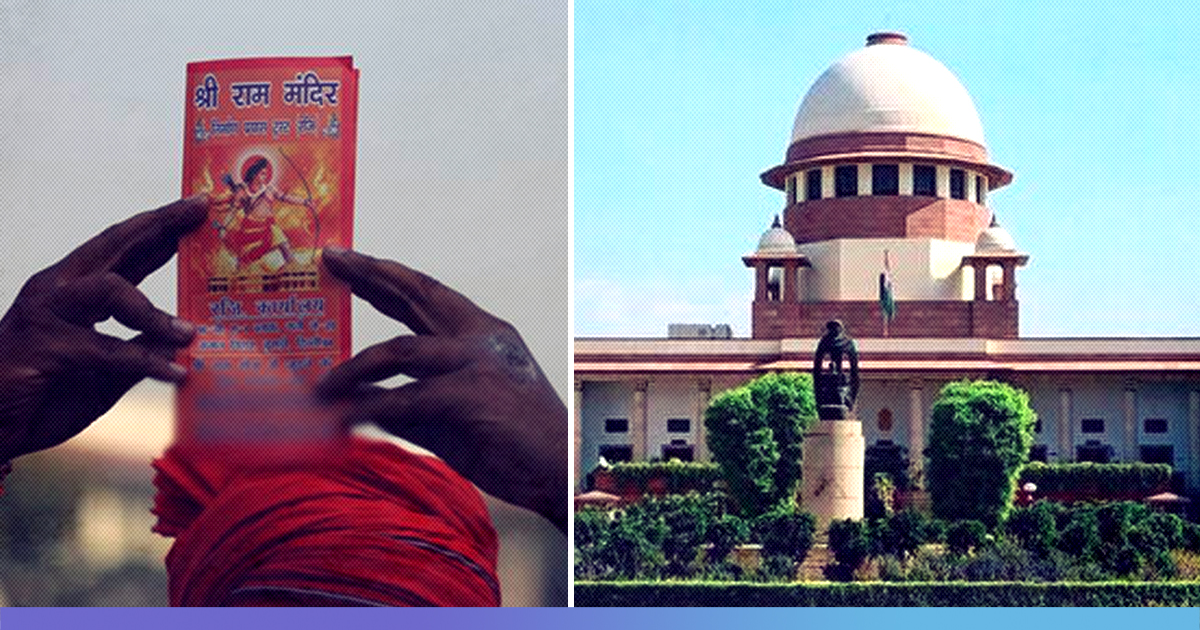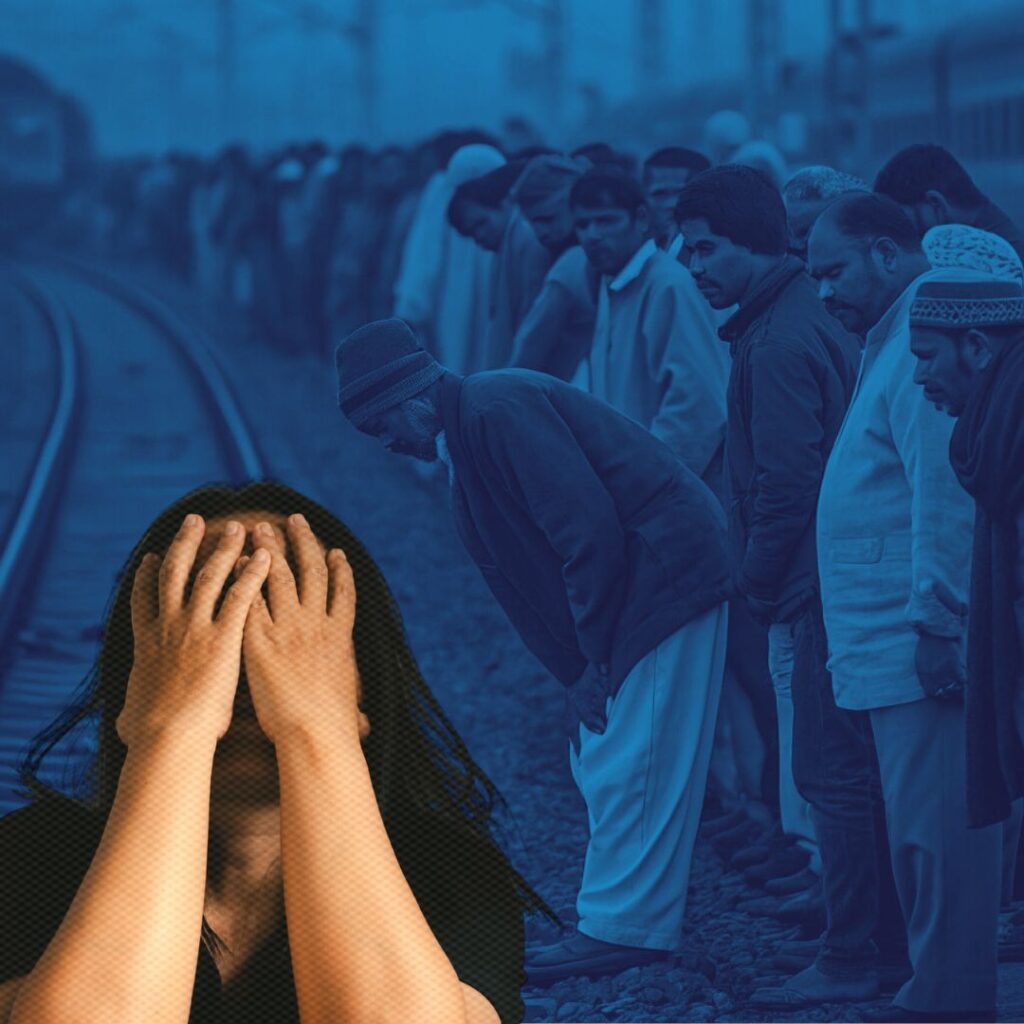Modern-day Ayodhya has been rechristened many times and Saket, Awadh, Oudh have all been names that defined the township and its people’s symbiotic culture; but since the mid-nineteenth century, a communal dispute became its identity.
On the 9th of November 2019, the strife was supposedly put to rest, but there has been an uproar in the chambers of academicians, intellectuals, lawyers and judges over the non-deliverance of justice and India’s frightening ascent to illiberality.
A Short Tale Of Ayodhya’s Diversity
A town of ancient significance, Ayodhya is regarded as one of the Sapta Puris – the seven sacred cities of Hindus – and revered because of its association with the great Indian epic Ramayana, which mentions it as the birthplace of Rama. As per scriptures, Lord Rama is believed to have lived during the Treta Yuga – a period that is said to have existed 20 million years ago.
But there is very little historical evidence to corroborate the long-standing belief that the site of the Babri Masjid was actually the ‘janmabhoomi’ of Lord Rama as the town has been under the influence of various religions.
In classical history, Ayodhya was the capital of the kingdom of Kosala which was believed to have been ruled by the descendants of the Sun. The town was also impacted by Buddhist magnetism and scholars generally agree that Ayodhya is identical with the town of Saketa, where the Buddha is said to have resided for a time.
Its significance as a Buddhist hub can be assessed from the Chinese-Buddhist monk Faxian’s account in the 5th century CE – where he said that there were a 100 monasteries in Ayodhya. It has also been home to a number of other monuments, including a stupa built by the Mauryan emperor Ashoka.
The place was called Oudh when the Kanauj kingdom rose to power in the 11th and 12th centuries, and over the years the region was included in the Delhi sultanate, the Jaunpur sultanate and finally the Mughal Empire.
Oudh gained a degree of independence early in the 18th century but became subordinate to the British East India Company in 1764 and in 1856 it was annexed by the British after which the Babri Masjid-Ram Janmabhoomi dispute surfaced.
Experts Opine On Ayodhya
“A lot has been discussed in the last 40 years so the history is before us”, historian and Delhi University professor Apoorvanad said. “We know the history, we know that in 1949, idols were placed in the mosque under suspicious circumstances.”
Citing the letter from Dhirendra and Krishna Jha’s book, Ayodhya: The Dark Night, he emphasised on the importance of discussing the present.
As per the writings in the book, the then district collector K K Nayar conspired with other persons from local authorities and watched over the placement of the idols. India’s first prime minister Jawaharlal Nehru had even written to Nayar to have the idols removed on priority, but the instructions had fallen on deaf ears.
“We know all of this. This is on record and we have Nehru’s historical letters but I fail to understand why are we still talking about this as in the last 30 years we have discussed it ‘threadbare’ on multiple platforms”, he said with a hint of desolation in his voice.
The book he quotes, Ayodhya: The Dark Night, vividly describes the conspiracy behind the entire dispute sewing together disparate threads to present a buried narrative that begins with the assassination of Mahatma Gandhi.
Senior journalist and author, Dhirendra Jha was strictly against the idea of excavation at the Babri Masjid site ever since its proposal. Speaking to The Logical Indian he said, “There should not have been excavation in the first place. How far should you excavate and who decides where to stop? Because India has several cultural layers and if you go down in history then you will encounter different bands of heritage, so why should you reach a particular point and stop?”
Elucidating his view further, he said: “The point is that after Independence the law of the land should have taken its course, and any monument which was there at that time should have remained as it was.”
Most of the experts The Logical Indian reached out to, firmly believed that the dispute was a part of the ‘Hindutva project’.
Apoorvanad spoke about how the cow’s status in Indian society was an issue in the 1960s when Hindutva politics was slowly gaining popularity. “The parliament was gheraoed and attacked, for cow protection and when that didn’t do enough to set Hindu passions ablaze, the Babri Masjid became a point of discussion.”
“There was a structured approach to this as, at that time, the reach of television and Doordarshan was at its peak. Ramanand Sagar’s Ramayan was aired and it became unprecedently popular. Simultaneously the Ram Janmabhoomi dispute was discussed and this ‘Ram’ metaphor was used to politically mobilise Hindu passions while all of BJP, RSS, VHP, and Bajrang Dal got involved in it”, he added.
It was around this time that the disappointing moniker of ‘Babur ki aulad’ for Indian Muslims was peddled by Hindutva forces. Commenting on this ‘Muslim invader’ narrative, Najaf Haider professor of history at JNU said that is wasn’t right to call the Mughals ‘invaders’ or ‘plunderers’. “All empires displayed a great element of conquest. Kingdoms have never been formed through consent but only by the way of wars or alliances. Empires are a product of conquests but once the conquest has been completed, it is upon the ruler to see what he will do with the land won over. Of course, Babur conquered, Akbar also conquered several parts around his already-existing empire which his successors maintained, but they were not plunderers.”
Elaborating his on his school of thought – built by years of study and specialisation in medieval Indian history – he added that the Mughals were rulers who governed the country and not looted it. “Plunder is coercion and is irregularly executed. Taxation, however, is organised and legal. The Mughals taxed their subjects and 90% of their revenue came from those collections but it was distributed amongst local ruling classes and used for empire-building.”
Deeming it wrong to declare that the Mughals were high-taxing ruthless rulers, he said “This can be said only if research proves that previous rulers had a lighter regime for tax.”
Dhirendra Jha pointed out in the pre-democracy period several mistakes were committed and whoever was the ruler, the kingdom was governed as per his notions of right and wrong. “You can’t sit and start correcting ancient mistakes and history, now. All of that has become a part of our shared heritage and you cannot destroy the heritage of a country”, he asserted.
There was a collective resonance to the understanding that V P Singh’s announcement of Mandal commission’s reservation policy had triggered the likes of Lal Krishna Advani to lay the foundation of Hindutva politics. Under the leadership of Advani, ‘Ram Mandir’ was used as a political tool to forge an undivided Hindu identity.
To sow the seeds of Hindu supremacy in the hearts of the countrypeople, LK Advani made his infamous Rath Yatra and performed the Ram Shila Pujan where bricks were collected from across the country from Hindu households with the promise that those blocks would be carried to Ayodhya for constructing a ‘mandir’. Large scale violence took place when the Pujan was ongoing.
It was a campaign performed in phases, slowly to culminate on the 6th of December, 1992 when the kar sevaks had to assemble to do something ‘symbolic’.
“On YouTube, you will find Atal Bihari Vajpayee addressing the sevaks. Listen to his speech and you will very clearly comprehend what they were planning to do. The kar sevaks even publicly rehearsed the demolition. It was well-planned, pre-planned and happened in front of all “, Apoorvanand said.
“A mosque was demolished and a confidence was generated in Hindus that they can anything in the open and no court of law can stop them. That is how the climb of Hindutva politics to power began which will now consolidate even more,‘ he added.
But have secular ideals fallen? The Logical Indian reached out to famous historian and NCERT writer of history textbooks Arjun Dev for his views on the subject. “I think most people have been very forgiving of the Supreme Court over the kind of judgement they have delivered”, he said sarcastically.
Strongly maintaining that there was no temple demolished for Mir Baqi’s construction of the Babri Masjid, he said: “The investigation done by the Archaeological Survey of India did not cover the recent period at all. They spoke about some structures from 6th century, therefore entirely missing out on the sequential importance of history. Also, how did they come to the conclusion that there was a Ram temple because there were no statues found, especially none of Ram.”
All of the experts stood by their conviction that the ASI’s findings at the Babri Masjid site were largely questionable. “The ASI report has already been discussed and criticised by Supriya Verma and Jaya Menon. They are one of our country’s leading archaeologists and their findings suggest that the ASI report lacks credibility”, Najaf Haider commented.
Haider further said that the Supreme Court’s admission that the Babri mosque was not built by demolishing a previously-existing temple is proof enough.
“There are two things – it is one to say that there was a structure buried underneath and another to claim that the mosque was built after razing a temple. The SC has not said that the mosque was built after demolishing a temple and the ASI’s report has maintained the same stance.”
However, findings aside, what appalled Arjun Dev the most was the fact that an actual ‘deity’ was considered as a litigant in the court case. “This is the first case in the history of the world that a deity is an appellant in a court. How did the Supreme Court even allow ‘Ram Lalla’ to be a respondent, I fail to understand the logic. No one has even questioned this.”
“Does a ‘god’ need to be defended by demolishing something that belongs to someone else’s faith? If Lord Rama is really the powerful being we are told to believe in, then isn’t it ridiculous that the one who has the whole world at his feet is coming to the court to fight for 2.77 acres of land?” Dev added.
It has been safely established that the non-Islamic structure, referred to in the ASI report, has no correlation to the Hindu faith, particularly a Ram-inspired structure. The Logical Indian asked Najaf Haider whether he thought Babur’s famous diary, Baburnama – that has acted as a source of historical reference – would hold the truth about the much-believed narrative of Mir Baqi destroying an already-existing temple on the orders of Babur.
“The Babarnama doesn’t have pages missing, it ends abruptly so that means it was either never written or lost. It isn’t a complete account and it ends just some time before his death. Had that account existed it would have held the coveted truths about the origin of the Babri Masjid. But we can’t say that account is missing, as popularly believed. It is wrong to call it ‘missing’ because that is implying that is was there, but it never was”, he stated.
Babur died in 1530 CE and the Babri Masjid is estimated to have been built between 1528-1529 CE, just a year or two before his passing away.
There is no proof that a structure was demolished for the masjid’s construction and there is very little evidence to even speculate the existence of a ‘Ram mandir’, owing to Ayodhya’s rich history of rulers and religious influence.
“The Supreme Court said that the demolition of the mosque was illegal, then what are they doing about it? Arjun Dev asks. “By giving the site’s claim to the party that razed its walls, isn’t the court emboldening the culprits? The criminal case against L K Advani, Uma Bharti and Murli Manohar Joshi has been pending forever and there was no word of moral condemnation for them”, Dev said in conclusion.
“You cannot give 5 acres of land to the aggrieved party whose religious faith was demolished and as compensation for their loss”, they opined unanimously.
Also Read: Babri Masjid History; Are British Colonizers Responsible For Today’s Divide?











